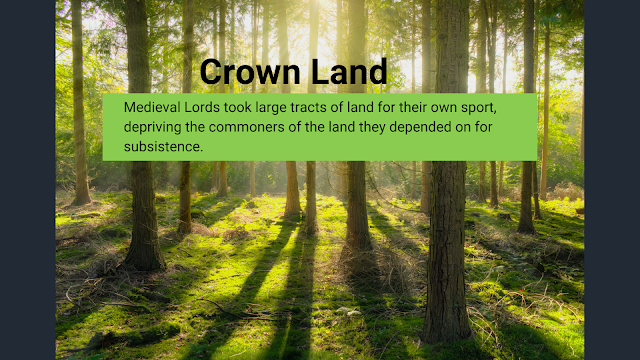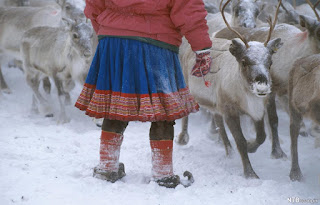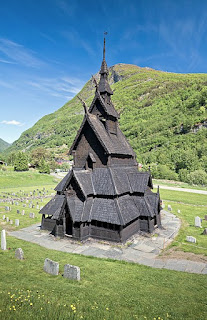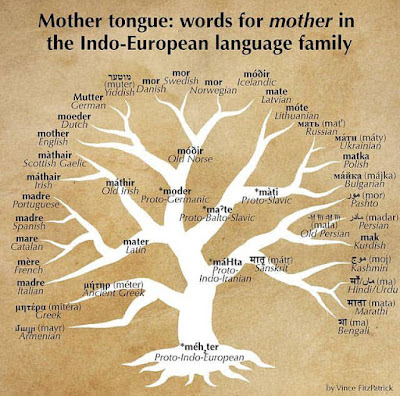A Brief History of the Forest Commons of Northern Europe
This is my second post in my series about the Forest Commons in Northern Europe and how they can inform Heathen practice today. If you have not read my Introductory Post, you should go there and check it out. It sets the tone with a narrative and gives you the basics of what a Forest Common is and what the Enclosure Movement was.
In this post I am delving into the History of the Forest Commons in Northern Europe. Understand that when I say this is a “brief” history, that is relative. (Sorry, not sorry.) In this section we will discuss:
The original Forest Commons
Changing definitions of King, and what it meant for the commons
Expansion of kingdoms and the creation of Crown Land
How the Enclosure Movement created landless people and led to Industrialization
Inequity and clashes between the Saami reindeer herders and farmers
The influence of the Church
The change of the structure of the Enclosure in the 1800s
The modern return of the Forest Commons
The Commons and the King
If we look at medieval laws for the commons we see that they were regulated by a ruler of sorts. In Norway the "King" had the right to allocate land to settlers.
It is important to understand that "King" in this context meant a ruler of a single settlement, so they were more like a chieftain. Settlements were well-spaced at this time with little need for rivalry. Any disagreements about resources were resolved at the Thing.
Expansion of Kingdoms
As communities grew it became more difficult for them to be defensible. Commoners signed over more rights to their rulers in exchange for promised safety. This eventually led to the creation of the Enclosure as Kings gained more and more power.

.

This image is by Trym Ivar Bergsmo,
as uploaded to NTB scanpix, with Creative Commons Attribution.
Competing for Land
The Forest Finns coming into Sweden caused clashes with the Swedish Commoners, but also with the Saami people who used the Forest Commons for Reindeer Husbandry.
The result was people being unable to continue farming with the competition. This created a new landless class of people who could be used as a new workforce in growing industrialized cities.

Borgund Stave Church in Lærdalen.
Image by Simo Räsänen and sourced on Wikimedia
under Creative Commons Attribution.
The Influence of the Church
The Church made an interesting third party to the creation of the Enclosure Movement. While the Church sought to convert the common people of the regions, they often sided with the Forest Commons and sustainable practices in forestry as well as hunting.
This is not to say that the Church did not play a hand in what was going on, because as people were displaced from the commons they flocked to the newly formed cities in search of a new livelihood. The Church welcomed them with a warm meal, a sympathetic shoulder, and the word of God.
While the Church did not directly have a hand in the Enclosure Movement, it benefited from it, and as the commoners became severed from the land due to displacement, the Church further alienated them from the local spirits of place by demonizing them. Churches were built over Pagan sacred sites, ancestor veneration was discouraged, and the stories of the Gods and landvættir were respun to favour Christianity.
The Enclosure Movement in the 1800s
Some changes occurred to the Enclosure Movement in the 1800s. These were largely due to the adoption of the Cartesian mindset. René Descartes wrote about this in his work “Meditations” in the 1600s. The premise is that non-humans are dead or soulless, which justified the commodification of the natural world as resources to be exploited.
While the Enclosure Movement had been slowly eating away at the Northern European connection to the land for centuries already, this was the breaking point. Scientists and Industrialists welcomed the Cartesian mindset, allowing them to extract violence against non-human populations, and by extension against populations of other humans as well. The trauma of being severed from the land in Northern Europe directly lead to the colonization of other parts of the world. This inter-generational trauma within Northern Europe as it lost connection to the landscape starting in the 1200s allowed for the breaking down of communities in the traditional sense, and lead to the new concepts of Industrialization, Commodification, Colonization, and eventually Capitalism. Before the Northern Europeans colonized other peoples, they first colonized themselves.
This is not an attempt to excuse the destruction of land and cultures inflicted by Northern Europeans on other peoples around the world, but rather just an attempt to determine what created such violence against human and other-than-human populations by the people of the North. By understanding history, perhaps it will give us the clues we need to heal this rupture going forward. However, for the sake of the narrative we must learn what happened next, before tackling these issues.
What happened in the 1800s in the Enclosure movement was the redistribution of privately owned lands away from the nobility and towards holdings owned by either wealthy individuals or companies. This allowed for a much larger scale devastation and exploitation of the landscape than ever before when paired with the Cartesian mindset.
The Timber Industry
As settlement sizes increased gradually between 1274 and 1687 CE there was more need for timber and firewood. This lead to the creation of the timber industry.
The move towards privatization of land allowed the timber industry to thrive and sell to foreign markets as well as just locally.
The landless people became workers in this unforgiving industry in order to try to create some livelihood for themselves.
As the timber industry grew, they began to sell to foreign markets, which allowed the ruling class to amass more wealth, while devastating the local landscapes. The commodification of the forest in the 1800s made it even easier for people to lose touch with the land and their connections to it. Up until the Industrial Age there were still people living outside the cities largely unaffected by the influences of the Crown, and the Church within their daily lives. These heath-dwellers (Heathens) were able to keep alive some of the old traditions in the forms of folktales and folk traditions. This is not to say it was easy or that traditions remained intact in the family lineages that some people try to claim today. Instead, change took longer to take root in the rural areas due to isolation and being largely out of sight and out of mind.
Things changed in the 1800s because of the rapid industrialization and new technologies coming into play. For example, steam power was to the 1800s as the internet is to modern times. The rapid changes and expansions of the 1800s were fuelled by the timber industry as timber was needed to build railways and ships.
Modern Forest Commons Movements
In the past 100 years places like Norway and Sweden have gone back to creating forest commons in an effort to decentralize what was previous “Crown” land, and keep the Timber Industry in check.
These new forest commons are often a way to give extra income to farmers while keeping tracts of land out of the hands of the Timber industry by preventing the Timber Industry from buying up land just to extract all its resources for gain. The modern Forest Commons place restrictions on how land can be held and used.
The Modern Forest Commons also help to preserve the Right to Roam among the common people, allowing locals to use land held by other individuals or by the municipality for subsistence purposes.
Specific Land Usage Rights
Some groups have very specific land usage rights for the Forest Commons such as the Saami people who use the land for reindeer husbandry, and mean that the Saami can use the same lands that may be held in commons by other groups, such as farmers within the limitations of their specific land usage rights.
Climate Concerns and Sustainability
Most recently Climate Concerns, sustainability, and biodiversity have begun to shape legislation involving modern Forest Commons.This means revisiting how land held in common can be used by industries such as the Tourism Industry. It also means movements to rewild land, going as far as to reintroduce species to the commons that have long been extinct, such as buffalo and aurochs, in an attempt to create a new and complete ecosystem and improve biodiversity.
The Re-Spiritualization of Nature
This is the stage we are at now, where we are beginning to realize that our rupture from nature is harming ourselves and our environments. We are realizing that we need connection to nature for our own well-being and that this outweighs the value of commodification of natural resources. We see this in the demand for eco-tourism as well as the desire to return to earth-based spirituality. There is an interest in “forest bathing” and nature pilgrimages. On the surface it is still superficial, but it is driven by the deep desire for feeling connected again to the land. This is the post-colonial and post-industrial world. We are seeing discussions on a global and national scale about the rights of the natural world. We are met with the idea that trees or rivers have personhood, which means we must then discuss what rights these other-than-humans then have.
In many ways the existence of the modern Heathen is a natural step in the progression back to connectedness with the land. We have been severed from the land and from our ancestors and we are reclaiming that. We are actively working to decolonize ourselves.
I am certain some of you are cringing right now at my word choices, but as we move into the next post I hope you will begin to see the value of what I am saying. In the next section I am shifting the focus from Northern Europe to Canada, so that we can begin to build an understanding of how we as modern Canadian Heathens can rebuild relations with the land where we live, while being sensitive to our shared history with the Indigenous peoples of Canada.
References:
"Commoning in the periphery – The role of the commons for understanding rural continuities and change” by Emil Sandstrom
“Ecology, Religions, Human Retreat, and Global Imagination” by Richard Holzol
"Exploring evolving spiritual values of forests in Europe and Asia: a transition hypothesis toward re-spiritualizing forests" by J.L Roux, et al.
"Fencing off ideas: enclosure & the disappearance of the public domain." by James Boyle
“Forests in common: Learning from diversity of community forest arrangements in Europe” by Anna Lawrence, Paola Gatto, Nevenka Bogataj, and Gun Lidestav
“The Forest Finns as Transmitters of Finnish Culture from Savo via Central Scandinavia to Delaware” by Juha Pentikainen
“From Common to Private Ownership: Forest Tenure Development in Sweden 1500-2010” by Fredrik Ingemarson and Jan-Erik Nylund
“Review: Cows and Forests: Swedish Environmental History” by Orjan Kardell
“Understanding Norwegian Commons” by Erling Berge
Further Reading:
Learn about Modern Commons
"The Golden Goose: What are the Commons? Why do they matter?" https://www.gaiafoundation.org/what-are-the-commons-why-do-they-matter/
Images:
All images were made by myself using Canva stock images unless sourced in text.

.png)
.png)


